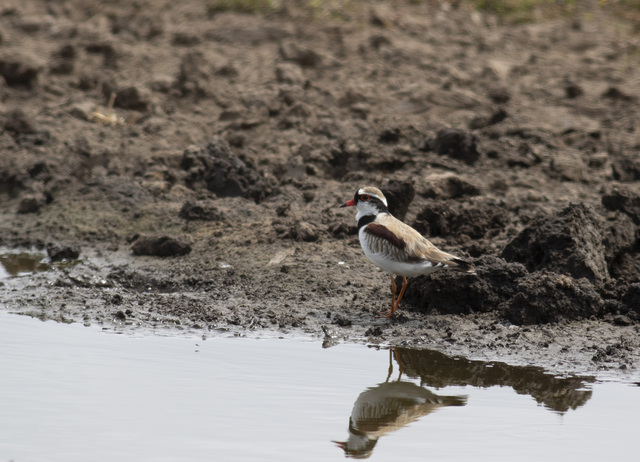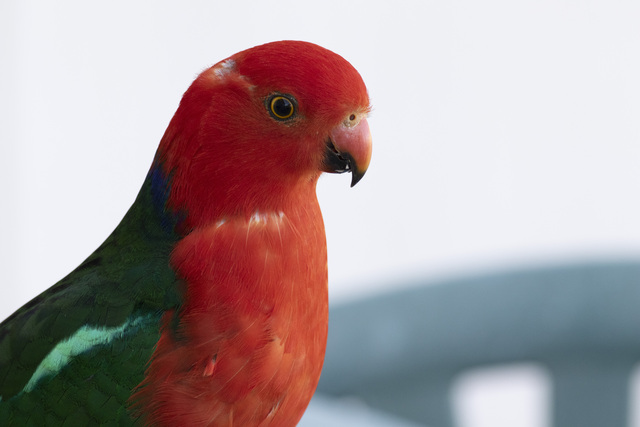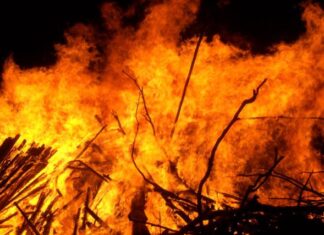As I write this, I’m looking out the window at the nesting box where a female red-rumped parrot fledged last week.
I watched the parent birds spend a few days trying to encourage the fledgling to leave the nesting box and it eventually took flight and I haven’t seen it since, even though the parent birds have returned to the garden.
I drove to Anglesea last week. I always stop at Point Addis to try and see a rufous bristlebird or two, but I didn’t manage to spot any of these birds. When I looked out to sea there was a flock of around 200 short-tailed shearwaters and about 25 fluttering shearwaters, along with a few Australian gannets and crested terns, all gathering in one area of the ocean where there must have been a sizeable school of fish near the water surface.
It was great to see the short-tailed shearwaters as there have been many deceased birds of this species seen all along the Victorian coast over the past few weeks. These birds undertake an annual 10,000km migration from around Alaska to Australia, which can take three or four weeks. If they encounter severe storms during the last stage of this flight, birds can perish from exhaustion.
I had a close encounter with a male king parrot in Anglesea. Male king parrots are the only Australian parrots that have a completely red head and the females have a green head and breast.
These parrots are normally seen in pairs or family groups, but this male was on his own. Hopefully he had a mate sitting in a nearby nesting hollow. King parrots are increasingly encountered in well-treed suburban areas where people feed them wild bird seed or sunflower seeds at feeding stations.
I visited Robyn on her property in Wallington, where during a quick 30-minute walk I saw 30 species of birds, including a pair of dusky woodswallows and a sacred kingfisher.
Around the corner from Robyn’s property I saw a black-fronted dotterel feeding on the edge of a farm dam, which is the third year in a row that I’ve seen this species in the same spot and then seen nesting activity with subsequent fledglings.
I received an email from Alan, who also went to Anglesea recently with his wife Anne. Anne observed about 50 different flowers and orchids and Alan was looking for southern emu-wrens, but lucked out on this species.
Alan has recently returned from the Flinders Ranges where he saw eight new species of birds (for him) including an iconic and rare grey falcon. Alan has published a book of his bird photos and I’m looking forward to owning a copy.
I received a message from Phil, who lives in Ocean Grove. He took a photo of a bird in his garden and wanted me to tell him the species of this bird, and I was able to inform him that the bird was an eastern spinebill.
This is a honeyeater that has a lovely long curved bill, which enables it to gain nectar from deep inside flowers. These birds hover around flowers much like the American hummingbirds. They are larger in size compared to hummingbirds.
I saw a ruby-throated hummingbird at the Memphis Botanic Gardens recently and it was the tiniest bird I had ever seen and at first glance I thought it was a butterfly.
There is a lot of nesting activity by hooded plovers on our beaches, so please observe the signs denoting nesting sites on the beaches and keep dogs on leads in these areas.
The three hatchlings at Barwon Heads near the bluff only lived for a few days last week and it’s so tough for these birds to help their hatchlings survive until they can fly.
The good news is that two hoodie chicks fledged last week at Point Roadknight near Anglesea.









